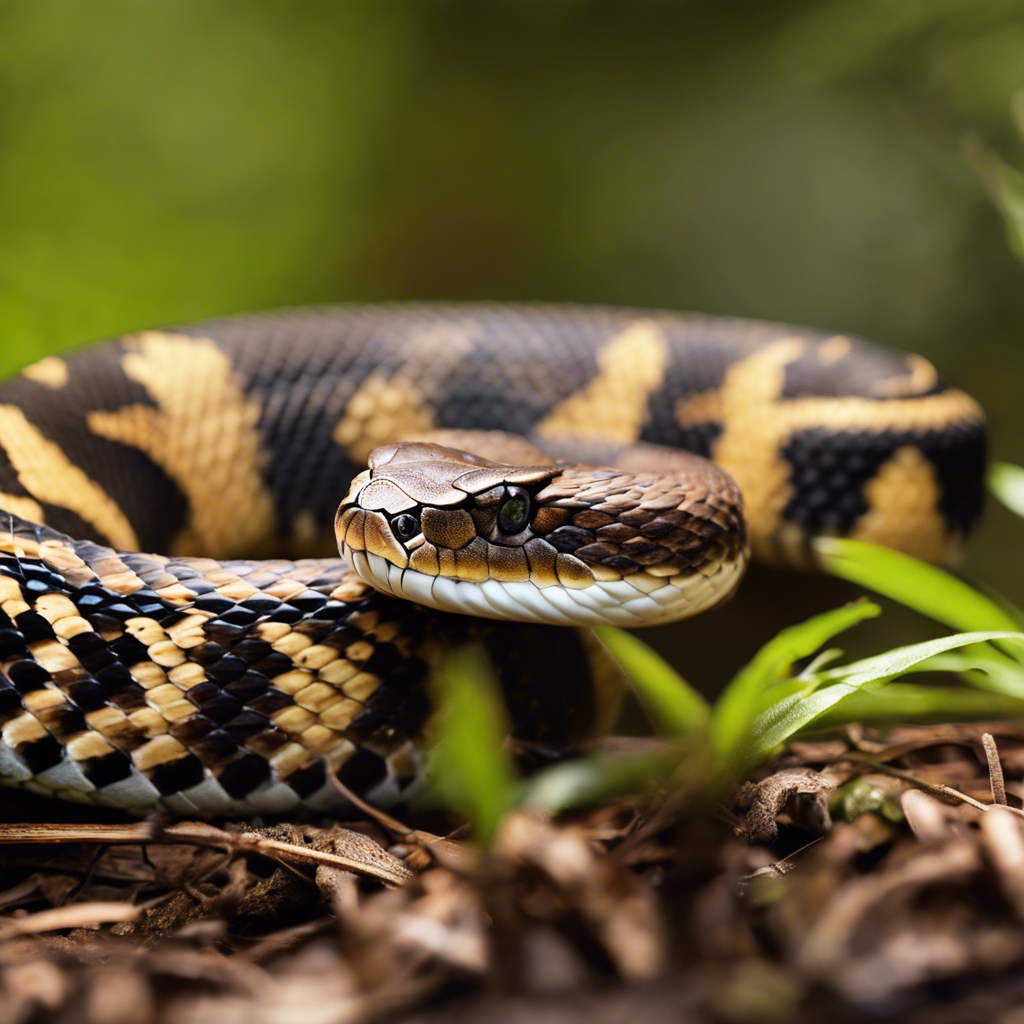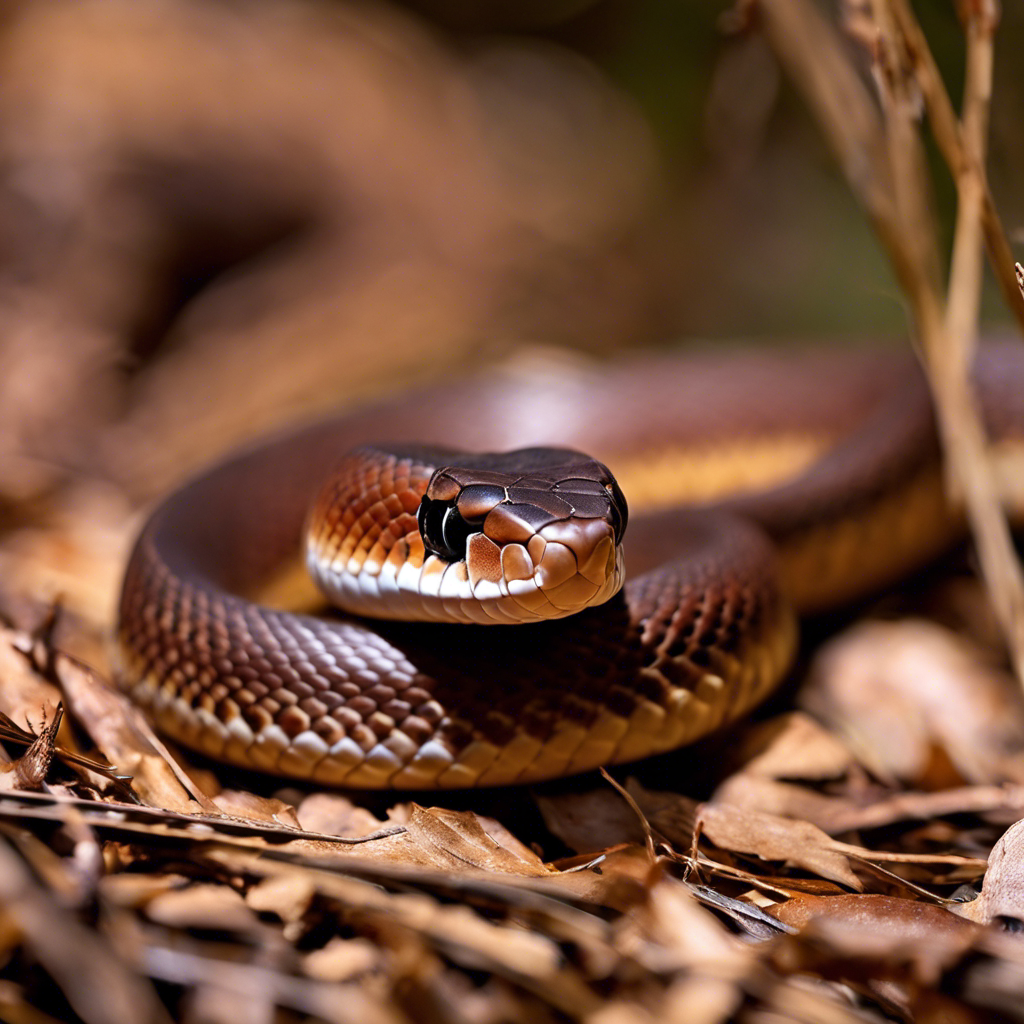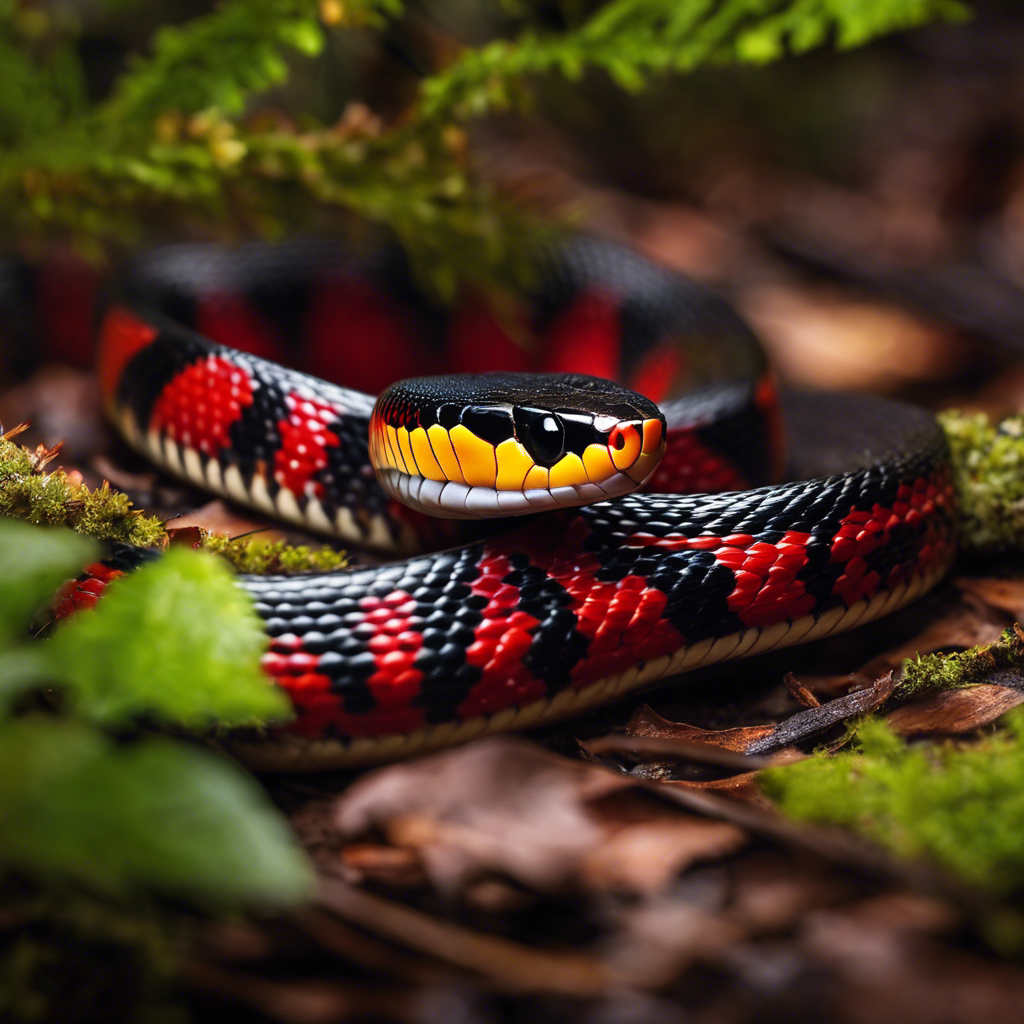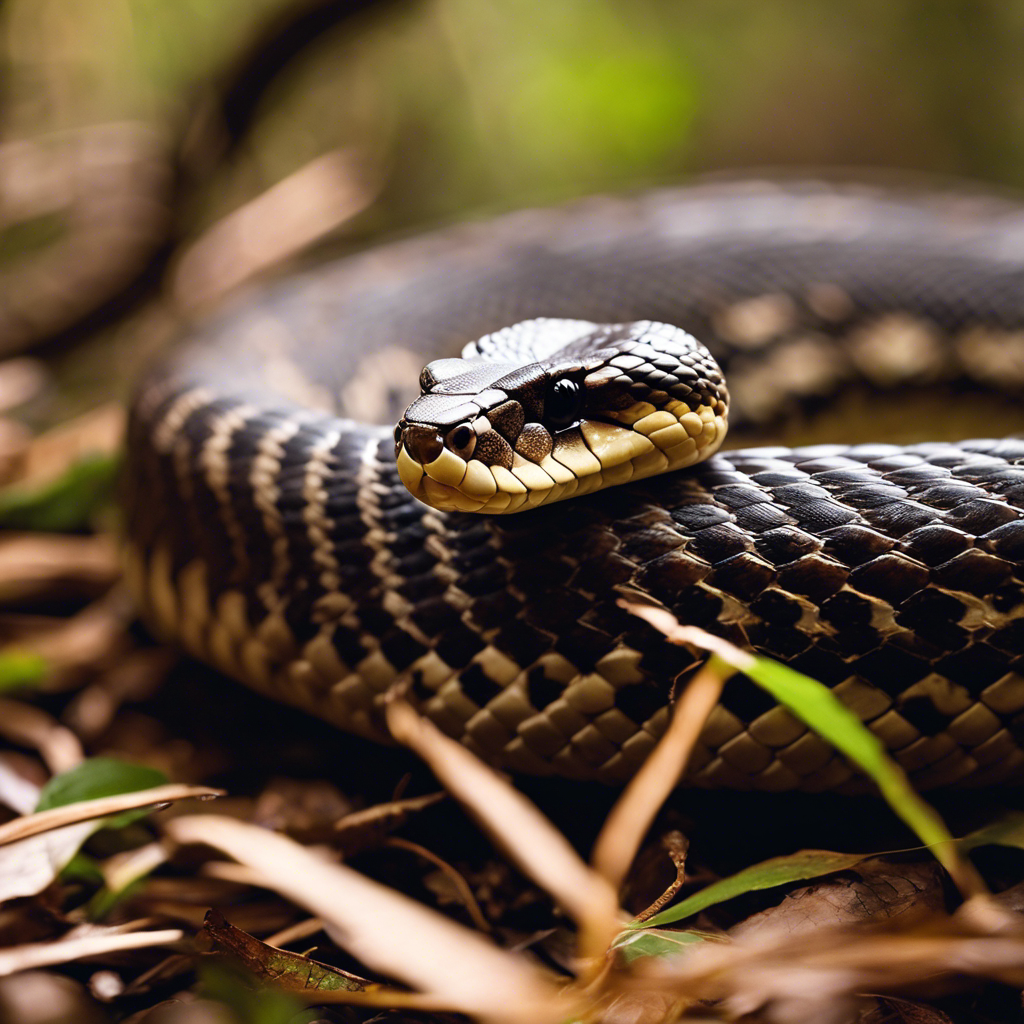As an avid herpetologist with years of experience studying snakes, my encounters with the copperhead snake in Pennsylvania have always been fascinating. The intricate patterns on their scales never fail to captivate me.
However, beyond the copperheads, my experience has taught me about the lesser-known venomous species that inhabit the state. I believe that understanding their behaviors and habitats is essential for anyone venturing into the wilderness.
Exploring Pennsylvania’s diverse snake population has been both educational and thrilling, providing me with a deeper appreciation for these often misunderstood creatures.
Key Takeaways
- Venomous snakes in Pennsylvania include Eastern Copperheads and Timber Rattlesnakes.
- Conservation efforts are vital for threatened species like the Eastern Massasauga Rattlesnake.
- Identifying features of venomous snakes include venom potency, habitat preferences, and warning coloration.
- Protection measures and awareness are essential for the survival of venomous snakes facing conservation challenges.
Eastern Copperhead

One of the most common venomous snakes found in Pennsylvania is the Eastern copperhead, known for its distinct color pattern and habitat preferences. The Eastern copperhead, scientifically known as Agkistrodon contortrix, displays a coloration of pale tan to pinkish-tan with darker crossbands, making it easily recognizable.
These venomous snakes are prevalent in deciduous forests, mixed woodlands, and swampy regions throughout Pennsylvania. While Eastern copperheads are venomous, they aren’t aggressive and tend to freeze rather than flee when approached closely. Their behavior varies seasonally, with nocturnal activity in hot summers and daytime activity during spring and fall.
Fatal bites from Eastern copperheads are rare, highlighting the importance of respecting their presence in their natural habitat.
Timber Rattlesnake

Slithering stealthily through Pennsylvania’s rocky terrains and woodlands, the timber rattlesnake, with its distinctive warning rattle, stands as one of the state’s prevalent venomous reptiles. These large snakes, known for their impressive size, are widespread across Pennsylvania, primarily inhabiting rocky areas, woodlands, and mountainous regions.
The timber rattlesnake’s warning rattle serves as a crucial signal to deter potential threats. Apart from their role as formidable predators, these snakes play a significant ecological role by controlling rodent populations in the state. If you encounter a timber rattlesnake in Pennsylvania, it’s essential to observe from a safe distance and appreciate their contribution to the local ecosystem.
Eastern Massasauga Rattlesnake

Emerging from the rocky terrains and woodlands of Pennsylvania, the Eastern Massasauga Rattlesnake, one of the state’s three native venomous snake species, is distinguished by its petite size and preference for wetland fields. This venomous snake, often found near water sources, sports large dark spots along its back for easy identification. The Eastern Massasauga is considered threatened in Pennsylvania due to habitat loss and degradation. Encountering this elusive snake in the wild is rare, but if you do, caution is advised to prevent potential bites.
| Feature | Description |
|---|---|
| Venomous | Yes |
| Size | Petite |
| Habitat | Wetland fields |
| Conservation Status | Threatened in Pennsylvania |
Northern Copperhead

Inhabiting the rocky, forested regions of Pennsylvania, the Northern Copperhead, scientifically known as Agkistrodon contortrix mokasen, showcases a distinctive color pattern of dark, chestnut-brown bands on a lighter background.
Here are some key facts about the venomous Northern Copperhead in Pennsylvania:
- Habitat: These snakes prefer rocky, wooded areas where they can blend in seamlessly with their surroundings.
- Role in Ecosystem: Northern Copperheads help control rodent populations, playing a vital ecological role in maintaining balance.
- Behavior: While generally non-aggressive, these venomous snakes will bite if they feel threatened or cornered, making it important to give them space and respect in their natural habitat.
Timber Rattlesnake

The Timber Rattlesnake, a prominent venomous species in Pennsylvania, is recognized for its large size and deadly venom. These snakes are among the most common venomous snakes in Pennsylvania, with a widespread presence throughout the state.
One of the key features of the Timber Rattlesnake is its distinctive rattling sound, which serves as a warning sign when the snake feels threatened. These venomous snakes typically inhabit rocky ridges and wooded areas, where they can easily camouflage themselves.
Encounters with Timber Rattlesnakes should always be approached with caution due to their potent venom. It’s important to be aware of their presence in Pennsylvania and take necessary precautions while exploring their natural habitat.
Eastern Massasauga

With a distinctive presence in Pennsylvania’s wetland fields, the Eastern Massasauga stands out as a rare and endangered venomous rattlesnake species.
Habitat: This small rattlesnake species is native to Pennsylvania and is commonly found in wetland fields, particularly in marshy or swampy areas.
Identification: The Eastern Massasauga can be easily mistaken for non-venomous snakes due to its size and appearance. It’s recognizable by the large spots on its back, which differentiate it from other species in the region.
Conservation Status: Considered endangered, the Eastern Massasauga faces threats to its survival and habitat, making conservation efforts crucial for the preservation of this rare venomous snake in Pennsylvania.
Northern Copperhead

A common venomous snake species in Pennsylvania, the Northern Copperhead is recognized for its distinctive hourglass-shaped pattern of scales. These snakes are prevalent in various habitats such as forests, fields, and rocky areas throughout Pennsylvania. Despite their venomous nature, Northern Copperheads are generally mild-mannered and will try to avoid human interaction whenever possible. Their venom, which contains cytotoxic and hemotoxic components, can lead to tissue damage and potential complications if bitten. Being able to correctly identify and be aware of the presence of Northern Copperheads can significantly reduce the risk of unnecessary encounters and ensure safety in areas where these venomous snakes are found.
| Characteristic | Description | Importance |
|---|---|---|
| Habitat | Forests, fields, rocky areas | Diverse habitats for encounters |
| Behavior | Relatively docile, avoids confrontation with humans | Reduces risk of bites |
| Venom Composition | Contains cytotoxic and hemotoxic components | Causes tissue damage and potential complications |
Eastern Coral Snake

Venturing beyond the territory of the Northern Copperhead in Pennsylvania, you won’t encounter the Eastern Coral Snake as it primarily inhabits the southeastern United States. This species of snake is known for its distinctive coloration of red, yellow, and black bands, serving as a warning sign of its venomous nature.
Here are some key facts about the Eastern Coral Snake:
- The Eastern Coral Snake is part of the Micrurus genus, which includes various coral snake species in the Americas.
- This snake belongs to the Elapidae family, distinguishing it from the pit vipers commonly found in Pennsylvania.
- The neurotoxic venom of the Eastern Coral Snake targets the nervous system, making it a potent threat to those who may encounter it in its native habitats.
Timber Rattlesnake

Inhabiting various habitats across Pennsylvania, the Timber Rattlesnake stands out as one of the state’s most prominent venomous snake species. These timber rattlesnakes are recognized for their large size, potent venom, and widespread distribution within Pennsylvania. They play a crucial role in maintaining ecological balance in their habitats. Easily identifiable by the distinctive rattles at the end of their tails, timber rattlesnakes are typically found in wooded areas, rocky outcroppings, and hilly regions of the state.
| Timber Rattlesnake Facts | |
|---|---|
| Size | Large |
| Venom Potency | High |
| Distribution | Widespread |
| Habitat | Wooded areas, rocky outcroppings, hilly regions |
| Identifying Feature | Rattles at the end of their tails |
Eastern Massasauga

The Eastern Massasauga rattlesnake, being the smallest venomous snake species native to Pennsylvania, thrives in wetland fields as its preferred habitat. When encountering Eastern Massasaugas in the wild, one must remember the following:
- Threatened Species: Due to habitat loss and human activity, Eastern Massasaugas are considered a threatened species in Pennsylvania, necessitating protective measures to ensure their survival.
- Rarely Sees Aggression: Despite possessing venom, Eastern Massasaugas are rarely aggressive towards humans. They typically avoid confrontation and only strike if they feel threatened or cornered.
- Identification Challenge: Eastern Massasaugas can be easily mistaken for non-venomous snakes due to their similar appearance, making it crucial to exercise caution when encountering them in their natural habitat.
Frequently Asked Questions
Are Cottonmouths in Pa?
No, cottonmouths, or water moccasins, are not found in Pennsylvania. They primarily inhabit warm, aquatic habitats in the southeastern U.S. If encountering a venomous snake in PA, it is more likely to be a copperhead or a timber rattlesnake.
How Common Are Copperheads in Pa?
Copperheads are fairly common in Pennsylvania, often found in various habitats. Their distinct hourglass pattern helps identify them. These snakes are known for blending in well, making encounters tricky. Stay alert while exploring outdoors.
Are Water Snakes in PA Venomous?
Water snakes in Pennsylvania, like the Northern water snake and Queen snake, are non-venomous. They pose no threat to humans. Understanding their characteristics and habitats can help you differentiate them from venomous species in the area.
What Kind of Snake Looks Like a Copperhead in Pa?
When in Pennsylvania, it’s crucial to know that Eastern milk snakes, often confused with copperheads due to similar banding, are harmless. Red, black, and white bands on milk snakes can resemble coral snakes, but they are beneficial rodent controllers.
Conclusion
In conclusion, when exploring the wilderness of Pennsylvania, it’s important to be aware of the presence of venomous snakes such as the eastern copperhead, timber rattlesnake, and eastern massasauga rattlesnake.
By familiarizing yourself with their characteristics and habitats, you can better protect yourself and others from potential encounters.
Remember to exercise caution, respect their space, and always be prepared with proper safety measures when venturing into snake territory.
Stay informed and stay safe.

An avid ornithologist, zoologist and biologist with an unwavering passion for birds and wild animals.
Dr. Wilson’s journey in ornithology began in childhood and led him to obtain a Ph.D. in Ornithology from the prestigious Avian Research Institute. He has worked closely with renowned experts in the field and conducted extensive research and field studies globally.

